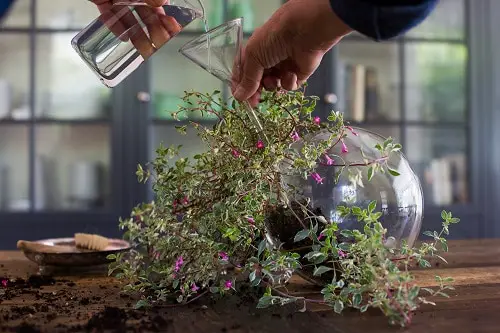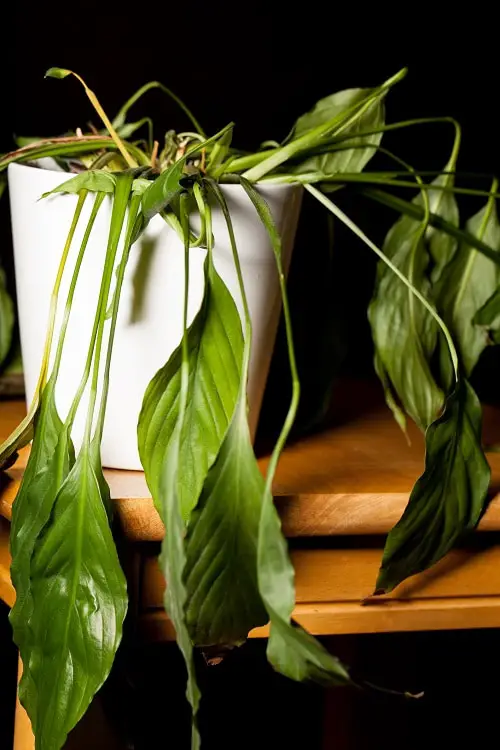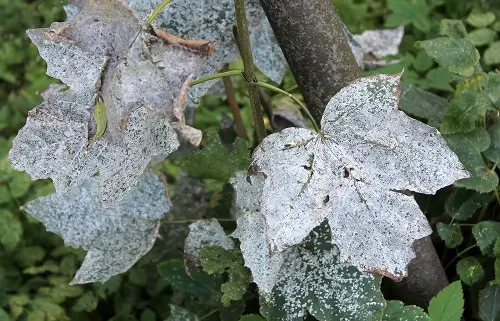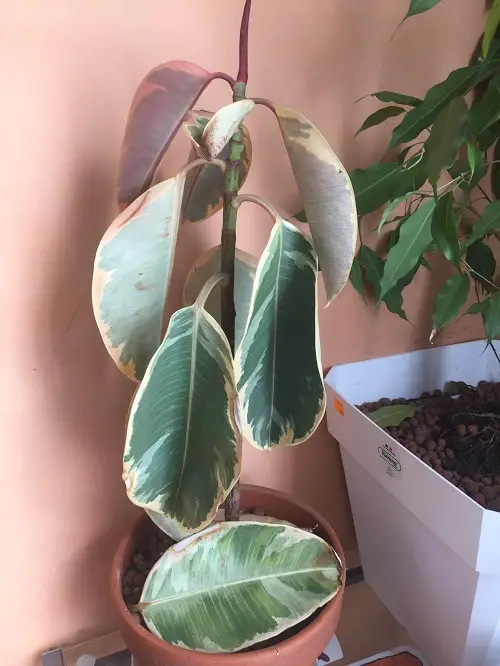If your indoor plant is looking gloomy and sad, then check out these Signs of Unhappy Houseplants and follow the measures suggested here!
If your favorite indoor plants are not thriving and looking dull—it’s good to know the Symptoms and Signs of Unhappy Houseplants to see whether they’re unhealthy or not.
Signs of an Unhappy Houseplant
1. Fewer Flowers, Excessive Leaves

If you notice more leaves on your flowering houseplant than its flowers, it indicates excessive nitrogen or lack of sunlight. To avoid this, provide more light and feed with reduced nitrogen fertilizer. Make a fertilizing schedule and follow it!
Have a look at 4 Best DIY Potassium Fertilizer Recipes here
2. Brown and Crispy Foliage
Like dropping foliage, it’s normal for a plant to have some brown leaves. But the problem arises when new foliage gets affected or more leaves turn brown. This indicates that your plant is unhappy. The reasons are:
- If the entire leaf is turning brown and crinkly, it indicates underwatering and a dry or less humid environment. In such conditions, water the plant deeply and make sure you do not let the soil go completely dry for a long time. If it is due to dry air, add a humidifier or pebble tray.
- If the leaf’s edges turn brown, it’s a sign of too much fertilizer, excessive use of pesticides, dry soil, hot air, low temperature, accumulated salts, or root rot.
To fix it, fertilize the plant a little less; once a month is fine, and stand the pot in trays lined with pebbles. Also, water the plants thoroughly, so the excess salts flush out through drainage holes. And keep the plant in a stable spot.
3. Scorched Leaves
Scorched and burnt leaves are a sign of overexposure to the direct sun. In such conditions, move the plant from direct to indirect sunlight and remove the affected foliage. Water the plant well but start practicing this rule–Water only when topsoil feels dry to touch and avoid overfertilization as it will worsen the burn.
4. Wilting Plant and Smaller Leaves

Too wet soil can cause a wilting plant and drooping leaves. Avoid overwatering to encourage healthy root growth and prevent root rot. If the plant is wilting, remove the plant from the pot and check the roots, and if you find rotten, swollen, or infected roots, trim them. Repot the plant using a fresh potting mix in a clean pot with adequate drainage holes.
5. Spotted or Speckled Leaves
The reason behind this issue is the fungal infection. If you notice a similar problem, isolate the infected plant from other plants and increase air circulation by creating space between them.
Also, avoid misting or splashing water on foliage while watering, especially if you’re keeping your plants in a position that lacks air circulation and light.
6. Leaf deformation & White Powdery Fungal Growth on Foliage

Powdery mildew causes the issues mentioned above. Treat this problem by stopping to splash water on leaves, removing infected foliage, and avoiding cluttering plants too close together. Cleaning the leaves of houseplants periodically also help in preventing this problem.
7. Brown to Black and Soft Roots
Black, mushy, and brown roots show root and stem rot. In such cases, remove the affected plant, trim the infected roots, and repot the plant using a fresh potting mix in a clean pot and apply a fungicide.
8. Falling Leaves

Leaf dropping and shriveled leaves is a common sign of an unhealthy plant. Most houseplants shed a leaf or two once in a while, usually the mature ones close to the stem. But if your plant is shedding a lot of leaves, then it might be due to:
- Sudden changes in growing conditions or fluctuations in temperature
- Too small pot or very root-bound state
- Watering plant with cold water
- Lack of water
- Overwatering
- Overfertilization
9. Stunted Growth, Distortion, and Dieback
Due to botrytis blight, plants suffer from distortion, stunted growth, and dieback. You can manage this issue by isolating the diseased plant so the problem doesn’t spread among other plants. Also, cut the infected parts and improve air circulation.
It can also be due to the plant’s exposure to cold drafts of wind. In that case, keep it at a location where it is safe from sudden temperature changes and excessively cold air. Also, be careful of root rot. Do make sure that you are not overwatering the plant.
Soil types high in clay and nutrient defiance in plants are also two of the prime reasons for improper growth. Use a quality potting mix that is loamy with correct fertilization to ensure the plant stays healthy and happy!
10. Leaf’s Tip Turning Yellow and Brown

This problem indicates that your plant might be suffering from anthracnose. To cure this, remove the infected leaves and don’t mist the foliage. Also, avoid wetting the foliage too often while watering the plant.
Brown tips can also be caused due to under and overwatering, lack of nutrients or overfertilization, improper light, low air circulation, and exposure to extreme temperatures.
11. Variegated or Colorful Leaves Losing Color
If you have a houseplant with variegated foliage having bright colors and it starts to lose its vibrance with leaves changing to a solid color hue, then this indicates that the plant is not happy and is not getting enough light it needs.
The best way to cure this problem is to increase the amount of bright light it receives. Keeping the plant in the direct morning sun for 2-3 hours is good, too.
Sometimes, plant variegation and colors fade in too much sun too, if you’re keeping your houseplant in afternoon sun–it’s time to move it.
Bonus – Clean the Foliage

A plant may not be growing the way it should because of the dirt on the foliage. A thick layer of dust on the leaves will prevent it from absorbing light the way it should. Hampering its overall growth considerably, yellowing of leaves and droopy foliage.
The simple way to avoid this problem is to clean the leaves using a damp and soft cotton cloth. Gently wipe the outer layer of the leaves once in 10-12 days to keep the plant clean and happy!



My Jade plant has a white powdery looking deposit where the leaf joins the stem. I thought it was mildew and tried wiping it off but it’s sticky not powdery. I’ve had this plant for ten years kept it in a small ish pot so not too big. This is the first year it’s had this white stuff on it. What is it and what causes it please?
May be mealy bugs. I have the same problem. Look up mealy bugs for how to treat. It’s been difficult to totally get rid of them. I have to just stay on top of treatment
Spray some soapy water on it … it might help
Köszönöm!